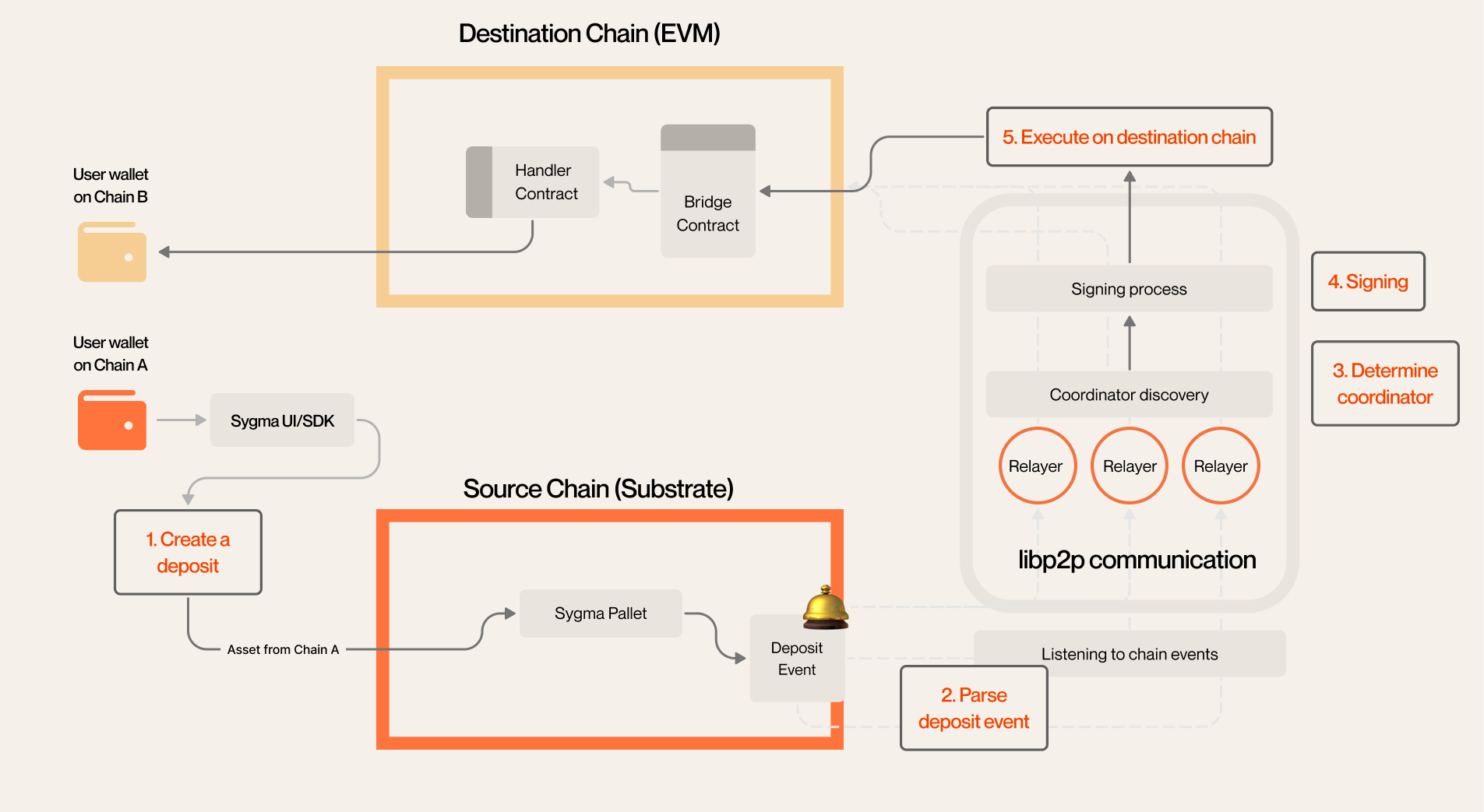Substrate Support
The following section details Sygma's compatibility with Polkadot and Kusama parachains via its Substrate pallet support.
A unique feature of the Sygma protocol is its ability to provide interoperability between EVM-based and Substrate-based blockchains. This includes those parachains deployed under Polkadot and Kusama's shared security model.
Similar to how Sygma enables EVM support by invoking various smart contracts, Sygma provides Substrate support via interactions with custom Sygma pallets.
Substrate pallets provide a modular approach to building Substrate-based blockchains and contain runtime logic which can be used, modified, and extended accordingly.

Key Concepts
Sygma's custom pallets contains a multitude of different identifiers with complex interrelationships. These may appear overwhelming at first for EVM developers crossing the chasm, but we will explain the concepts below:
MultiLocation:
MultiLocationis a cross-consensus message format (XCM) concept used to identify any single entity location that exists within the world of Polkadot consensus.MultiLocationalways expresses a relative location to the current location. Practically,MultiLocationsare used to identify places to send XCM messages. In Sygma pallets, it is used to identify the destination when depositing.MultiAsset:
MultiAssetis a Substrate type that identifies whether assets are fungible or non-fungible, native or foreign, etc. It is used to handle multiple assets in the Polkadot world. In Sygma,MultiAssetis used to identify the asset despite its location and fungibility.DomainID & ChainID: In the context of the Sygma pallets, a
DomainIDis a unique identifier for a particular domain, and aChainIDis a unique identifier for a specific blockchain. These IDs are registered together, so eachDomainIDis associated with a specificChainID. This information is stored in the chain's storage, and you can look up whichChainIDis associated with a particularDomainID.ResourceID: This is a unique identifier for an asset in Sygma. It's linked with an XCM asset through a mapping defined in the runtime, which associates an (XCM)
AssetIDwith aResourceID. This mapping is known asResourcePairs, as defined later in this section.AssetID: This can refer to two different types of
AssetIDs, one of u32 type and the other of XCM type.AssetID of u32: This is an identifier assigned to an asset in a Substrate blockchain. It's displayed in the assets page on the Polkadot JS App and is used when transferring the asset between accounts within the same parachain.
AssetID of XCM: This is a type of
AssetIDused in the context of XCM (Cross-Chain Message) communication. It's an alias forXcmAssetIDin Sygma pallets and serves as the asset identifier within the entire Polkadot ecosystem. It's linked with the asset'sMultiLocation, which is a data structure that describes where the asset is located.
SimpleForeignAssetConverter: This is a structure that binds the u32
AssetIDwith the Asset'sMultiLocation, establishing a link between the two.ResourcePairs: This is a mapping defined in the runtime that links the
XcmAssetIDand theResourceID.
Practically speaking, the MultiLocation of an asset plays a key role in the relationship between the asset, its different IDs (u32 AssetID and XcmAssetID), the basic fee associated with the asset, and how the asset is linked with a ResourceID.
For more on Substrate, please refer to their docs. For more on the Polkadot ecosystem, please refer to their wiki.